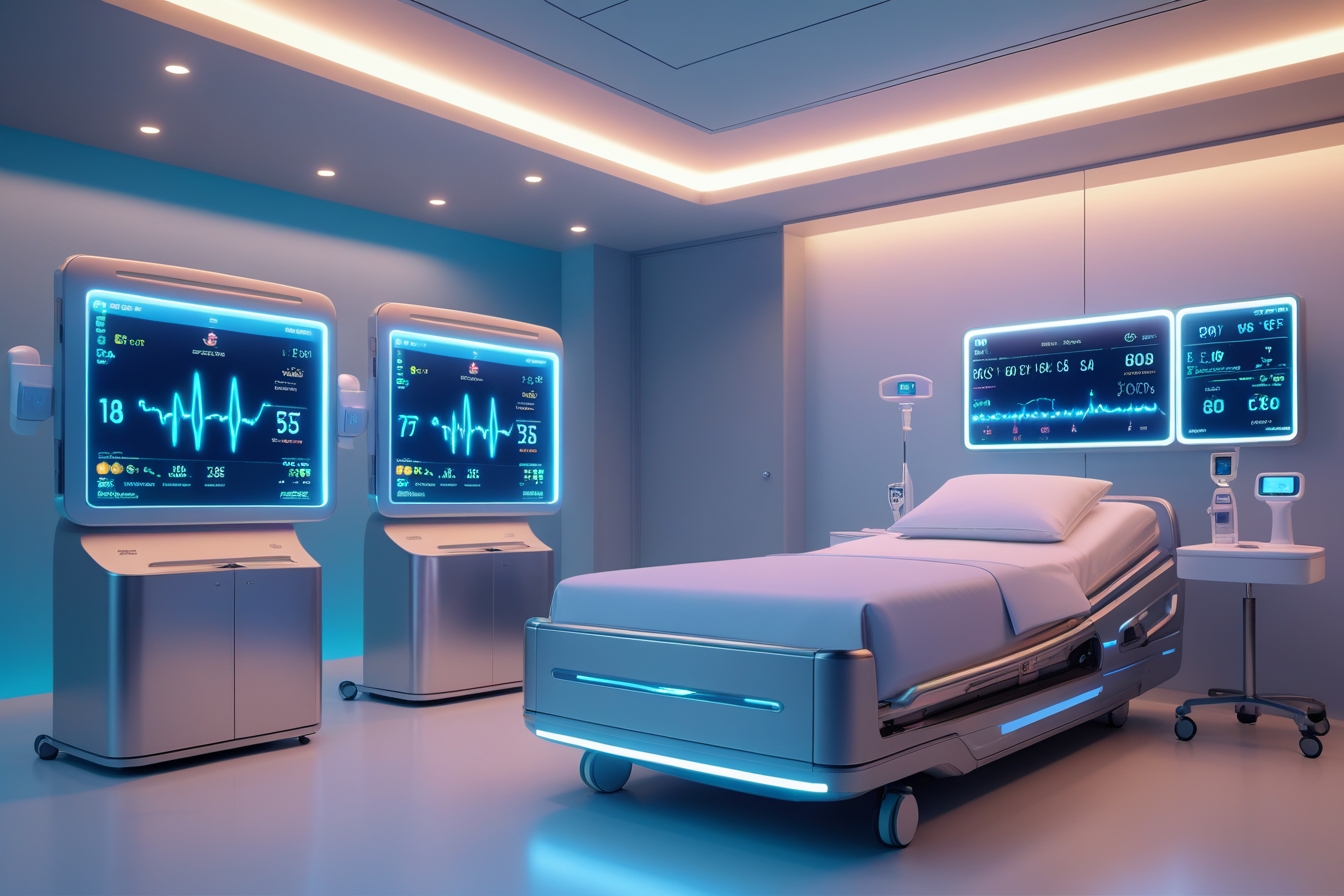The healthcare industry is rapidly evolving, with technological advancements transforming patient care. One of the most groundbreaking innovations is touchless medical monitoring—a game-changer that is improving healthcare accessibility, efficiency, and patient outcomes.
From AI-powered sensors to radar-based health tracking, touchless monitoring allows healthcare professionals to observe vital signs without physical contact. This technology is especially valuable for remote patient care, infection control, and chronic disease management.
What Is Touchless Medical Monitoring?
Touchless medical monitoring refers to the use of non-invasive sensors and artificial intelligence to track a patient’s vital signs without physical contact. These systems utilize cutting-edge technologies such as:
- Radar and LiDAR sensors – Detect subtle body movements like breathing and heart rate.
- Thermal imaging – Measures body temperature without physical contact.
- Optical sensors and cameras – Monitor pulse rate, oxygen levels, and even emotional states.
- Radio frequency (RF) signals – Track respiratory and cardiac activities through walls or clothing.
- AI-powered software – Analyzes real-time data for early detection of health issues.
These advanced monitoring systems are being integrated into hospitals, nursing homes, and even personal home care setups, making healthcare more efficient, proactive, and accessible.
Benefits of Touchless Medical Monitoring
1. Enhances Patient Comfort and Safety
Traditional monitoring devices, such as blood pressure cuffs or ECG leads, can cause discomfort and require physical contact. Touchless systems eliminate the need for invasive procedures, making them ideal for elderly, critically ill, or immobile patients.
2. Reduces the Risk of Infection
In healthcare settings, cross-contamination is a major concern. Touchless monitoring minimizes direct contact between patients and medical staff, significantly reducing the spread of infections, including COVID-19, flu, and hospital-acquired infections (HAIs).
3. Enables Real-Time Remote Monitoring
With smart home integration, touchless medical monitoring allows doctors to track patients from a distance. This is particularly beneficial for individuals with chronic diseases like diabetes, heart conditions, and respiratory illnesses. Real-time alerts enable early intervention, preventing medical emergencies.
4. Improves Elderly and Post-Surgical Care
Seniors and post-surgical patients often require continuous monitoring. Touchless technology provides a non-intrusive way to track vitals, sleep patterns, and mobility, ensuring better recovery outcomes without requiring frequent hospital visits.
5. Supports AI-Driven Predictive Healthcare
By collecting vast amounts of health data, AI-powered analytics can identify early warning signs of medical conditions. Machine learning algorithms help doctors predict potential health risks, leading to faster diagnosis and personalized treatment plans.
How Touchless Monitoring Works in Healthcare Settings
1. Hospital and ICU Use
Hospitals are adopting touchless medical monitoring in ICUs, emergency rooms, and post-operative wards. AI-driven cameras and thermal sensors continuously monitor patients, alerting healthcare providers about vital fluctuations.
2. Home Healthcare Solutions
Patients with chronic illnesses or recovering from surgery can use Wi-Fi-enabled touchless sensors in their homes. These devices sync with mobile apps and cloud-based systems, allowing physicians and caregivers to monitor patients remotely.
3. Wearable and Non-Wearable Innovations
While wearable health devices like smartwatches have gained popularity, newer non-wearable solutions—such as bedside radar sensors and AI-powered cameras—provide continuous, passive health tracking without requiring patient interaction.
4. Assisted Living and Nursing Homes
Elderly care facilities are implementing touchless monitoring to detect falls, breathing irregularities, and activity levels. This helps staff intervene promptly, improving overall patient well-being.
Challenges and Considerations
Despite its numerous advantages, touchless medical monitoring faces some challenges:
1. Data Privacy and Security
Since touchless monitoring relies on AI, patient data privacy is a major concern. Healthcare providers must comply with HIPAA regulations to ensure secure data handling and prevent breaches.
2. Cost and Accessibility
While hospitals are adopting this technology, home-based touchless monitoring systems can be expensive. Insurance coverage and healthcare policies need to adapt to make these solutions more affordable and widely available.
3. Accuracy and Reliability
Although AI-powered sensors have high accuracy, occasional false alerts or missed detections can occur. Researchers are continuously improving algorithms to enhance reliability and precision.
Future of Touchless Medical Monitoring
With advancements in AI, IoT (Internet of Things), and 5G connectivity, touchless medical monitoring is set to become a standard in modern healthcare. Some anticipated innovations include:
- Smart hospital rooms with fully automated patient monitoring.
- Integration with electronic health records (EHR) for seamless data analysis.
- AI-driven voice assistants for patient interaction.
- Predictive health analytics to identify potential medical issues before symptoms appear.
Conclusion
Touchless medical monitoring is revolutionizing patient care by offering safer, more efficient, and non-intrusive health tracking solutions. As the technology continues to evolve, it has the potential to transform healthcare accessibility, making remote patient monitoring, elderly care, and hospital management smarter and more proactive.
By embracing this innovation, healthcare providers can improve patient outcomes, reduce hospital stays, and offer more personalized and preventive care. The future of medical monitoring is touchless, and it’s already reshaping how we approach healthcare.



